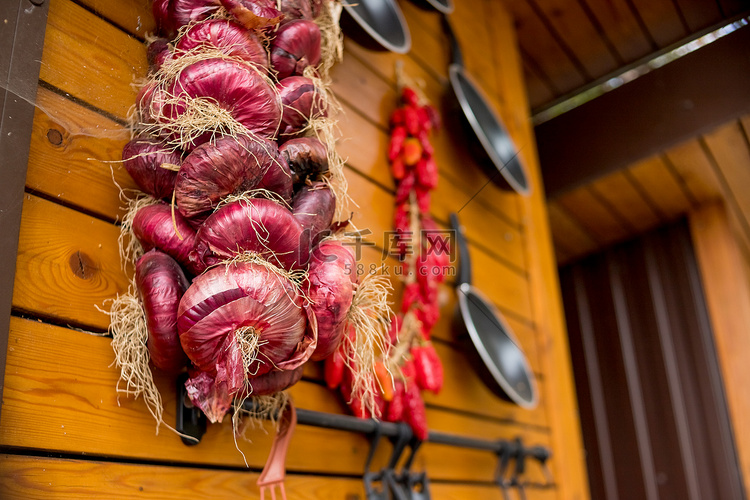New and trendy holiday traditions may be all the rage, but when it comes to New Year's Eve, some customs have deep historical roots dating back thousands of years to ancient Babylon. In the 4,000 years since then, many traditions have come and gone, but one thing has remained constant: our passion for marking the transition from old year to new year with rituals and a bit of New Year's superstition.
For those looking for a novel way to celebrate the New Year with their families, here are some New Year's Eve traditions from around the globe. Many of these traditions are food-related and signify prosperity, longevity and abundance in the new year. Others focus on maximizing good luck and warding off bad luck through the use of lucky objects, rituals, and specific dress codes. Some traditions even look to the future for signs of what's to come, and pigs often play an important role in this. Whether these are true New Year's anecdotes or delightful fictional stories, adopt one of them to get the new year off to a lucky start!
Watch the crystal ball land: a time-honored countdown event

When the clock strikes New Year's Eve, the eyes of the world are on the exciting Crystal Ball Drop in New York's Times Square. Since 1907, this event has been a classic symbol of New Year's Eve, carrying the anticipation and joy of countless people. This year's Crystal Ball is even more spectacular, a 12-foot geodesic sphere that hangs above the city like a giant, sparkling jewel. Weighing in at 11,875 pounds, it is solid and dignified, as if it were telling the story of the ages. The sphere is decorated with 2,688 crystal triangles from Watford, which glisten with a fascinating light, as if they were the brightest stars in the night sky. The 32,256 light-emitting diodes breathed life into the ball, giving it a colourful glow that illuminated every corner of Times Square and the faces of the people welcoming the New Year. Although New York is best known for its crystal ball landing, there are other cities that have their own unique landing ceremonies. Atlanta, Georgia, the symbol of sweetness and harvest of the giant peach slowly descending, as if with people's expectations for a better life in the new year from the sky; Plymouth, Wisconsin, a large block of cheese, rustic and mellow, conveying the unique local flavour and cultural heritage; Kennett Square, Pennsylvania, a large mushroom, with nature's vibrancy and mystery, for the New Year added a touch of unique colour; New Orleans, a hundred hundred mushrooms, the city of New Orleans, the New Year's Eve ceremony, the New Year's Eve ceremony. The lilies of New Orleans, elegantly blooming and glittering under the lights, are like an elegant dancer welcoming the arrival of the New Year. No matter how different the symbols are, their landing on New Year's Eve is like a grand visual feast, creating a dramatic and ceremonial countdown atmosphere for people, and immersing everyone in the longing for the New Year.
Eating 12 Grapes: A Spanish Superstition

In Spain, New Year's Eve begins with the ringing of the bells for a unique and interesting ‘grape feast’. According to an ancient custom, with each stroke of the clock, a round, plump grape is quickly popped into the mouth. This is not a simple act of eating grapes, but a ‘lucky challenge’ that races against time. In this brief moment, people not only have to chew and swallow the grapes quickly, but also contemplate in their minds the special significance that each grape holds. It is said that if one can successfully eat all 12 grapes before the bell rings out, it is like fulfilling a pact with destiny, and one will be favoured by good luck in the new year and everything will go smoothly. However, if you fail to eat all the grapes before the last bell rings, you may be enveloped by the gloom of bad luck and experience all sorts of undesirable things in the new year. This is why the streets of Spain are filled with tension and excitement at this time of year, with families busy and looking forward to the 12 grapes in the hope that they will open the door to good luck in the new year.
Jumping in the Waves: A Brazilian Faith
In the passionate country of Brazil, the beaches on New Year's Eve are always crowded with energetic and expectant people who participate in a unique traditional activity - jumping in the waves. In local beliefs, the surging waves on New Year's Eve are imbued with mystical powers. As night falls and the sea breeze gently blows, people go out to the sea and bravely jump against the waves. Legend has it that each wave represents a deity of the Ombandan religion and that they come down to earth with blessings and good luck. Moreover, every time they jump over a wave, they can make a wish, as if these wishes will be recognized and fulfilled by the gods as the waves run over them. This unique belief makes even those who are usually in awe of the sea, not willing to get close to the sea, in the atmosphere of the New Year's Eve infection, drum up the courage to throw themselves into the waves, looking forward to using the power of the waves for their own new year to add more luck and surprises, so that life as the waves of the sea, as full of vitality and passion.
Dropping Plates: A Danish Tradition
On a quiet New Year's Eve in Denmark, the sound of plates breaking on the streets may be heard from time to time, which seems to be a strange scene, but it is actually a time-honoured tradition. As the New Year draws nearer, Danish families take out carefully selected plates and bring them to the front steps of their homes. As the countdown approaches, the plates are slammed to the ground, and instantly the sound of the plates breaking rings out in the night sky. In their conception, these broken pieces of plates symbolise good luck and popularity. The next morning, when the sunlight pours in front of the door and people see the pieces of broken plates on the ground, they will be filled with joy because it means that the new year will be full of good luck. Of course, after all this joy comes the cleaning up, but this little ‘hassle’ does not detract from the love of this tradition, which carries with it good wishes for the New Year and fills every Danish family with hope and joy at the start of the new year.
Mistletoe dreams: warding off evil spirits in Ireland

In mystical Ireland, there is a romantic and whimsical atmosphere in the air on New Year's Eve. People believe that mistletoe, holly or ivy possesses magical powers that can unlock the mysteries of the future for them. When night falls over the land, people would carefully place these plants, symbolising their mystical powers, under their pillows and then go to sleep with apprehension and anticipation. It is said that in their sleep, these plants will work their magic and make people dream of their future partners. This custom adds a romantic touch to New Year's Eve and makes many young people willing to stay up late to observe New Year's Eve, just for the sake of that wonderful dream that they might meet their true love. On this cold winter night, every corner of Ireland seems to be shrouded by this mysterious atmosphere, and people go to sleep in anticipation, hoping to get a revelation of destiny in their dreams and find their own happy home.
Decorating with onions: a Greek custom

In Greece, onions are not just a common ingredient, but a symbol of good luck for the New Year. When the New Year is approaching, Greek housewives carefully select a few full, round onions, tie them with a string or ribbon, and hang them on the door of their house. These onions hang there as loyal guardians, welcoming the New Year. Onions were given such symbolic significance because of their magical ability to germinate unnoticed. This resilience was seen by the Greeks as a symbol of prosperity and abundance, signifying that the new year would be as full of life and hope for families as the sprouting of an onion. On the morning of New Year's Day, when the first rays of sunlight enter the house, parents gently take the onion hanging on the door and go into the children's room, gently patting the children with the onion to wake them up from their sleep. This simple but warm gesture not only conveys the parents' blessing for their children in the new year, but also makes this traditional custom full of strong affection and love, and makes the Greek New Year kick off in joy and warmth.
Wearing white: a Brazilian preference
In Brazil, on New Year's Eve, the streets and alleys seem to be transformed into a sea of white, with people dressed in clean white clothes to celebrate the arrival of the New Year. This unique tradition has a deep meaning in the hearts of Brazilians. White is considered a symbol of good luck and peace, and it represents purity, tranquillity and the promise of good things to come. As night falls, the streets are illuminated with lights, and people dressed in white stroll through the streets or gather in the squares, their smiles shining brightly against the white background. The whole city seems to be enveloped by a peaceful atmosphere, and everyone is immersed in a beautiful vision of the New Year. Both the young and the old chose to wear white dresses, shirts or dresses to welcome the first light of the New Year in the most simple yet dignified way. This coordinated and unified style of dress not only allows people to visually feel the solemnity and purity of the New Year, but also becomes a unique and bright landscape on the eve of the Brazilian New Year, attracting the attention of countless tourists to witness this devotion and blessing for the New Year.
Making ‘Jumping Johns’: A Speciality of the American South
At the New Year's table in the Southern United States, ‘Jumping John’ is one of the essential main characters. This regional speciality is made from black-eyed peas, tender pork and soft rice. Legend has it that eating ‘Jumping John’ on the first day of the New Year will bring good luck, peace and prosperity to the family. The black-eyed peas resemble a black jewel, signifying the accumulation of wealth; the pork represents abundance and richness, adding flavour to life in the new year; and the rice symbolises stability and reunion, allowing families to be happy in the new year. The dish is often served with bright green kale and golden cornbread, the green of the kale symbolising life and hope, and the golden of the cornbread signifying wealth and abundance. Some families add even more good luck by quietly placing a shiny coin under the plate or preparing extra pork in the hope that the new year will bring prosperity and food and clothing. If you want to add some extra flavour to this traditional dish, try sprinkling the pork with our special Green Tea BBQ Seasoning. As the pork is grilled, the fresh aroma of the green tea will slowly penetrate into the meat, not only removing the greasiness of the pork, but also giving it a distinctive smoky flavour and healthy qualities at the same time. We believe that such a delicious and symbolic ‘Jumping John’ will be the centre of attention at your New Year's Eve party, allowing friends and family to taste=taste the food and at the same time feel the strong New Year's atmosphere and deep blessings.
Jumping into the New Year: The Danish Jumping Tradition
On New Year's Eve in Denmark, when the clock is about to strike midnight, a ‘jumping ceremony’ filled with joy and hope takes place in thousands of homes. Family members carefully move their chairs to the centre of the room and stand on them, waiting with excitement for the New Year. When the first bell rings through the night sky, people leap from their chairs into the new year. This seemingly simple leap contains the Danish people's good wishes for the New Year. They believe that by doing so, they can get rid of the troubles and bad luck of the old year and welcome the new year with a new attitude, so that good luck will follow them in the new year. This traditional practice has been passed down from generation to generation in Danish families, and on New Year's Eve, both young children and elderly elders take an active part in it, filling the moment with a warm and joyful atmosphere. In the moment of jumping, people seem to be able to feel the new year opening up to them, full of endless possibilities and opportunities, and making the Danish New Year full of vigour and hope from the very beginning.
Making New Year's resolutions: an ancient practice
The tradition of making New Year's resolutions dates back more than 4,000 years to Babylonian times. In that ancient and mysterious time, the Babylonians understood the importance of setting goals and promises for themselves at the start of a new year. They would make solemn promises, either to pay off debts or to return items borrowed from others, in order to start the new year with prayers for divine blessings and prosperity. This ancient custom has been passed down through the ages and has become an important way of welcoming the New Year for people all over the world. Nowadays, when the bell rings, countless people will pick up a pen and write down their New Year's resolutions on a piece of paper, which may be about health commitments, such as exercising every day and maintaining a good routine; or about career pursuits, such as working hard to improve one's professional skills; or about improving relationships, such as spending more time with family and friends, learning to communicate better, and so on. Perhaps it is about improving relationships, such as spending more time with family and friends, learning to communicate better, and so on. Despite the changing times, people's expectations for the New Year and their desire for self-improvement have never changed. Making a New Year's plan is like planting a seed of hope in the new year, waiting to take root and blossom in the days ahead.
Give the Gift of More: Russian Traditions
During that unique period of Soviet history, Christmas was forbidden to be celebrated for a variety of reasons, so New Year's became the main holiday for people to express their emotions and pass on their blessings. On New Year's Eve, the streets of the USSR were filled with a festive atmosphere, and there was a gleam of anticipation in the eyes of the children, who knew that a special surprise was coming their way. This surprise came from the ‘Old Man of the Cold’ (also affectionately known as ‘Father Christmas’) and his adorable granddaughter, the ‘Snow Maiden’. These two mysterious messengers will travel around the city with gifts full of joy and warmth to every child. Unlike gift-giving customs elsewhere, New Year's gifts in the USSR carry more emotional and cultural connotations. They were not just material gifts, but also wishes for a better life in the new year. In those days of relative lack of materials, a well-prepared gift was especially precious, which made children feel strong affection and social care in the cold winter, and also made the New Year an important festival full of warmth and joy in the hearts of the Soviet people, leaving behind many unforgettable memories.
Kissing a Lover: The Midnight Hour Move
When the New Year's clock strikes midnight, the whole world seems to be immersed in an atmosphere of joy and peace. At this special moment, lovers all over the world tacitly embrace each other and kiss each other deeply.
This romantic gesture is not only a natural outpouring of emotion, but also contains an ancient and mysterious belief. It is believed that when the New Year's bell rings, a kiss with the beloved will set the tone of happiness for the new year, as if the kiss possesses magical powers that can dispel bad luck and usher in good fortune and sweet love. Therefore, every time this moment, whether in the bustling city square, or in the warmth and tranquility of the living room at home, lovers will be heartily choose this special kiss object, with the most sincere feelings and the most affectionate kiss, to welcome the arrival of the new year. This kiss, like the first ray of sunshine in the New Year, warm and bright, illuminating each other's hearts, but also for the new year's love life injected full of happiness and anticipation, so that people in the new year more firmly guard each other's love, walking together every day of the future.
Eating round food: a globally shared idea
In many corners of the world, there is a common belief that eating round food can bring prosperity and wealth in the new year. This idea is deeply rooted in different cultures, and although it manifests itself in different ways, the symbolism is strikingly similar. In Italy, the tiny, round lentils have become a favourite on the New Year's table. In the eyes of the Italians, these unassuming beans are like shiny gold coins, representing the accumulation of wealth and the abundance of life. As families sit around the table, savouring the delicacies prepared with lentils, their hearts are filled with the promise of a wonderful new year. In the distant Philippines, New Year's customs are even more colourful. Twelve round fruits are carefully selected and placed on the table at home. Each fruit represents a month in the new year, signifying that each month will be as full, sweet and rich as the fruits. The bright colours and enticing aroma of these round fruits add to the festive atmosphere of the Filipino New Year, as well as the deepest prayers for a new year of material abundance, happiness and well-being. Whether it is the Italian lentils or the 12 round fruits of the Philippines, they all carry people's good wishes for the New Year and have become unique and heartwarming symbols of the New Year in cultures around the world.
Wearing clothes with polka dots: a tradition in the Philippines
In the Philippines, New Year's Eve is filled with joy and festivity, with people wearing a variety of clothes with polka dots, as if a sea of colourful flowers were blooming in the night. Behind this unique tradition lies the Filipinos' hope for the New Year - they firmly believe that wearing polka dots will bring them more luck and wealth in the new year. The dots, like little lucky symbols, are densely distributed on the clothes, symbolising that every bit of life will be filled with good luck. Both adults and children will carefully select a piece of clothing with polka dots before the New Year, some are playful and lovely polka dot dresses, some are stylish and handsome polka dot shirts, and even accessories are not spared, hats, scarves are decorated with round patterns. When the bell rings for the New Year, people wear these symbolic clothes to visit friends and relatives and celebrate the festivities, as if they are carrying all the good luck and blessings of the New Year to everyone. In the Philippine New Year culture, wearing clothes with polka dots has become an indispensable tradition, which not only shows the unique aesthetic concepts of Filipinos, but also sends their aspirations and pursuit of a better life, so that every New Year is full of hope and surprises.
Buying new good luck items: the German way
In Germany and Austria, the arrival of the New Year is always accompanied by a passionate quest for luck. Local people are keen to buy a wide range of lucky symbols to welcome the new year and pray for good luck. Among them, the image of the pig is favoured as a symbol of wealth and good luck. Whether it's a tiny pig-shaped doll or a beautiful pig-patterned jewellery item, it's a popular choice on people's New Year shopping lists.In addition, the lucky penny also carries people's desire for wealth, and the glittering coin seems to hold infinite possibilities. The horseshoe, which resembles a crescent moon, is believed to have the magical power to ward off bad luck and attract good fortune, and is often hung in a prominent place at the door or in the home. The clover, on the other hand, with its three leaves representing good fortune, has become one of many people's favourite lucky objects. In some parts of Germany, there are even edible lucky objects made of marzipan. These sweet candies not only satisfy people's taste buds, but also let people feel the happiness and good luck of the New Year while savouring the sweetness. When the first rays of the new year's sunshine fall on this land, these lucky objects begin to accompany people to start a journey full of hope and opportunities in the new year, which has become a unique and fascinating scenery in the New Year's culture of Germany and Austria.
